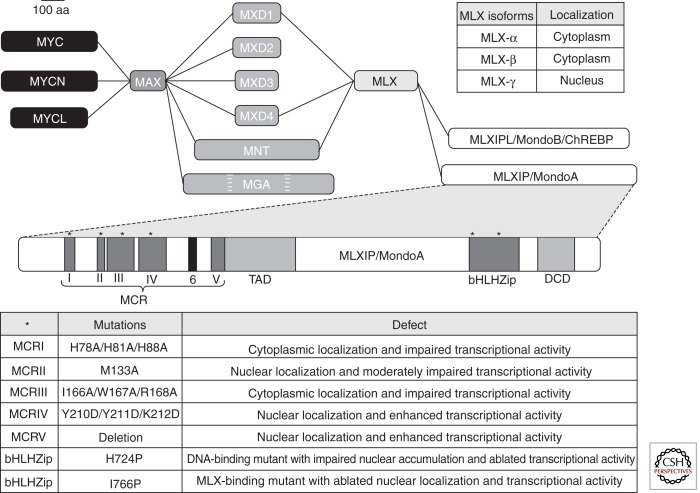Figure 1.
MAX- and MLX-centered transcriptional network. MAX binding proteins form one node of this transcriptional network, whereas MLX binding proteins form the second node. Competition for binding of MXD1, MXD4, and MNT provide one potential mechanism for interaction between the two nodes of the transcriptional network. MLX isoforms display distinct subcellular localization suggesting that complex switching may occur to facilitate nuclear accumulation and transcriptional regulation. Domain structure of MLXIP including the Mondo conserved regions (MCR), the transcriptional activation domain (TAD), the basic helix-loop-helix leucine zipper (bHLHZip), and the dimerization and cytoplasmic localization domain (DCD). Mutations introduced into individual MCR and bHLHZip domains lead to effects on subcellular localization and transcriptional activity. 100 aa, 100 amino acids.

